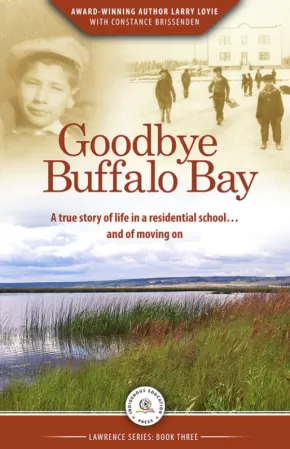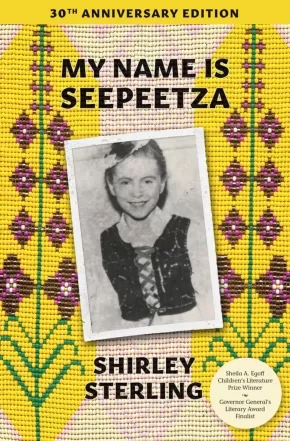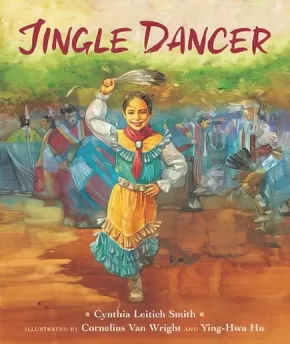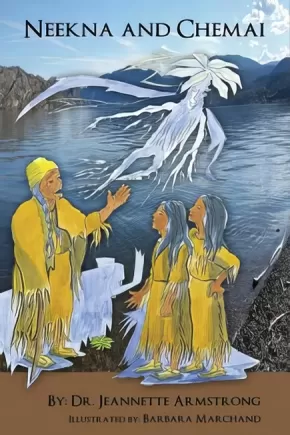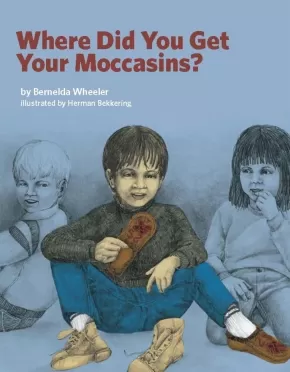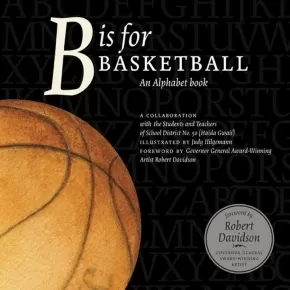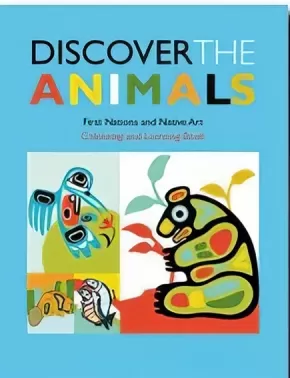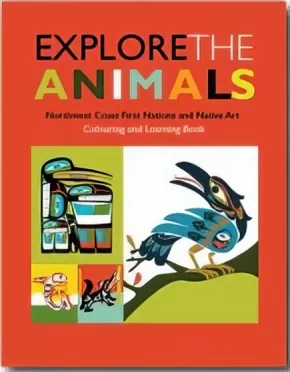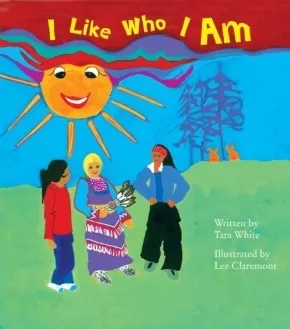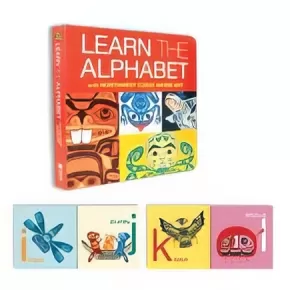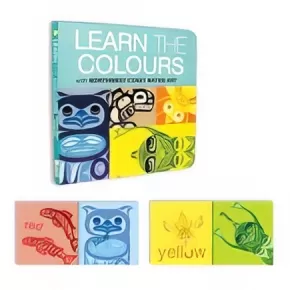
BC - Authentic First Peoples Resources K-7 2012
1
-
15
of
50 Results;
Sort By
Go To
of 4
This resource guide has been developed by the First Nations Education Steering Committee (FNESC) with assistance from the BCMOE and support from the Education Partnerships Program of AANDC. Date first published: March 2012.
Goodbye Buffalo Bay
$19.99
Format:
Paperback
Text Content Territories:
Indigenous Canadian; First Nations; Cree (Nehiyawak);
ISBN / Barcode: 9781990297274
Synopsis:
Synopsis:
A true story of life in a residential school and of moving on. Written by Award-Winning Cree author Larry Loyie with Constance Brissenden.
Goodbye Buffalo Bay is set during the author's teenage years. In his last year in residential school, Lawrence learns the power of courage to stand up for his beliefs. When he returns home he feels like a stranger to his family. The traditional First Nations life he once knew has changed. With Grandfather's guidance he finds his way. A book of self-discovery and the importance of friendship.
Educator & Series Information
This book is part of The Lawrence Series.
Recommended for grades 4 to 9.
Additional Information
142 Pages | Paperback
My Name is Seepeetza: 30th Anniversary Edition
$12.99
Format:
Paperback
Text Content Territories:
Indigenous Canadian; First Nations; Salish; Interior Salish; Nlaka'pamux (Thompson);
ISBN / Barcode: 9781773068565
Synopsis:
Synopsis:
An honest look at life in an Indian residential school in the 1950s, and how one indomitable young spirit survived it — 30th anniversary edition.
Seepeetza loves living on Joyaska Ranch with her family. But when she is six years old, she is driven to the town of Kalamak, in the interior of British Columbia. Seepeetza will spend the next several years of her life at an Indian residential school. The nuns call her Martha and cut her hair. Worst of all, she is forbidden to “talk Indian,” even with her sisters and cousins.
Still, Seepeetza looks for bright spots — the cookie she receives at Halloween, the dance practices. Most of all, there are her memories of holidays back at the ranch — camping trips, horseback riding, picking berries and cleaning fish with her mother, aunt and grandmother. Always, thoughts of home make school life bearable.
Based on her own experiences at the Kamloops Indian Residential School, this powerful novel by Nlaka’pamux author Shirley Sterling is a moving account of one of the most blatant expressions of racism in the history of Canada.
Includes a new afterword by acclaimed Cree author Tomson Highway of the Barren Lands First Nation in northern Manitoba.
Educator Information
Recommended for ages 9 to 12.
Key Text Features: afterword, dialogue, journal entries, maps.
Correlates to the Common Core State Standards in English Language Arts:
CCSS.ELA-LITERACY.RL.4.2
Determine a theme of a story, drama, or poem from details in the text; summarize the text.
CCSS.ELA-LITERACY.RL.5.1
Quote accurately from a text when explaining what the text says explicitly and when drawing inferences from the text.
CCSS.ELA-LITERACY.RL.6.6
Explain how an author develops the point of view of the narrator or speaker in a text.
Includes a new afterword by acclaimed Cree author Tomson Highway of the Barren Lands First Nation in northern Manitoba.
Additional Information
128 pages | 5.10" x 7.50"
Jingle Dancer (PB)
$12.50
Artists:
Format:
Paperback
Text Content Territories:
Indigenous American; Native American; Muscogee (Creek);
ISBN / Barcode: 9780063018112
Synopsis:
Synopsis:
The affirming story of how a contemporary Native American girl turns to her family and community to help her dance find a voice.
Jenna, a contemporary Muscogee (Creek) girl, loves the tradition of jingle dancing that has been shared by generations of women in her family, and she hopes to dance at the next powwow. But she has a problem—how will her dress sing if it has no jingles?
The cone-shaped jingles sewn to Grandma Wolfe's dress sing tink, tink, tink, tink.
Jenna's heart beats to the brum, brum, brum, brum of the powwow drum as she daydreams about the clinking song of her grandma's jingle dancing.
The warm, evocative watercolors of Cornelius Van Wright and Ying-Hwa Hu complement author Cynthia Leitich Smith's lyrical text in this picture book. Perfect for classroom and library sharing.
Educator Information
Suggested Ages: 4-8.
Additional Information
32 pages | 9.25" x 11.00" | Paperback
Neekna and Chemai
$16.95
Artists:
Format:
Paperback
Text Content Territories:
Indigenous Canadian; First Nations; Salish; Interior Salish; Syilx (Okanagan);
ISBN / Barcode: 9781926886435
Synopsis:
Synopsis:
Neekna and Chemai are two little girls growing up in the Okanagan Valley in the time before European contact. Through these two friends, we learn about the seasonal life patterns of the Okanagan First Peoples. The girls spend time with Great-Grandmother, who tells them about important ceremonies, and they gather plants with Neekna's grandmother. Grandmother explains how bitterroot came to be an important food source, and why the people give a special ceremony of thanks at its harvest. Grandmother also tells the story of how a woman was changed to a rock to watch over the Okanagan Valley. Neekna understands how important it is that she has received the knowledge passed down for generations, from great-grandmother to grandmother to mother.
Educator Information
Recommended in the Canadian Indigenous Books for Schools 2019-2020 resource list as being useful for grades 2-7 in these subject areas: Career Education, English Language Arts, Social Studies.
Key Points:
- Learn about the seasonal life patterns of the Okanagan people.
- Armstrong's main goal in writing is to educate young people about Indigenous culture and history.
- Both educator and protector, Jeannette Armstrong is a professor of Indigenous Studies and a Canada Research Chair in Indigenous Philosophy. Her research into Indigenous philosophies and Okanagan Syilx thought and environmental ethics that are coded into Syilx literature has been recognized locally and globally, and she serves as an active member of the Okanagan Nation Alliance and the En’owkin Centre.
Additional Information
52 pages | 5.00" x 7.00" | 3rd Edition
I Can't Have Bannock But The Beaver Has A Dam
$12.00
Artists:
Format:
Paperback
Text Content Territories:
Indigenous Canadian;
ISBN / Barcode: 9781553796626
Synopsis:
Synopsis:
A boy patiently listens to his mother's reasons for not making bannock-all the result of a beaver's need to make a dam.
Includes a bannock recipe!
Reviews
"I Can't Have Bannock But the Beaver Has a Dam is written in prose. It begins with a little boy asking his mother if he can have some bannock. She says no and tells him why. As for all little boys, mother's answer only offers material for another question. So the book's story is built on this question-answer exchange between the two. Each time the mother answers, she gives all of the information in the previous answer plus a new piece of information, so we see the picture expanding for the boy. The book would be a good teaching tool for the elementary teacher, especially for those in native and northern communities where bannock and power failures are a part of everyday life. It is recommended for all elementary school libraries." - Sharon A. McLennan McCue, CM Magazine
Educator Information
Recommended Grades: K-3
Additional Information
32 pages | 9.00" x 11.00" | New Edition
Where Did You Get Your Moccasins?
$12.00
Artists:
Format:
Paperback
Text Content Territories:
Indigenous Canadian;
ISBN / Barcode: 9781553796619
Synopsis:
Synopsis:
When a young boy's classmates gather around to look at a young boy's moccasins, he tells them the story of how his grandmother made them.
Additional Information
24 pages | 8.00" x 11.00" | New Edition
B is for Basketball
$12.99
Artists:
Format:
Hardcover
Text Content Territories:
Indigenous Canadian; First Nations; Haida;
ISBN / Barcode: 9780986576799
Synopsis:
Synopsis:
This is the official book of the 2011 All Native Basketball Tournament. These games have been held in Prince Rupert, British Columbia for over 50 years. Since its inception, the Tournament has become an important cultural gathering.
B is For Basketball was created in collaboration with the students and teachers of School District No. 50 on Haida Gwaii. It is a tribute, and it is a labour of love.
Finally, this is also an alphabet book that includes a Foreword by Governor General Award-Winning Artist Robert Davidson, and is filled with captivating illustrations, which is sure to be enjoyed by all!
B is For Basketball was recently featured on the CBC's North By Northwest! Congrats to the Students and Teachers of School District #50 (Haida Gwaii), and to Judy!
Educator Information
B is For Basketball was created in collaboration with the students and teachers of School District No. 50 on Haida Gwaii. It is a tribute, and it is a labour of love.
Additional Information
Foreward by Robert Davidson (Haida)
Relatives With Roots
$17.50
Artists:
Format:
Paperback
Text Content Territories:
Indigenous Canadian; Métis;
ISBN / Barcode: 9781926795003
Synopsis:
Synopsis:
Relatives With Roots: A Story About Métis Women’s Connection to the Land is a heartfelt story about a Métis grandmother who takes her granddaughter out into the bush to teach her how to pick traditional medicines. As the granddaughter learns the traditional beliefs and stories about how the Métis people use the plants for food and medicine, she feels happy to be a Métis child with access to such wonderful cultural knowledge. This charming and vibrant book introduces young readers to key concepts in the traditional Métis worldview while focusing on the special relationship between a young Métis girl and her grandmother. Relatives With Roots is the second in a series of children’s books relating to traditional Métis values by Leah Marie Dorion. The first book, The Giving Tree: A Retelling of a Traditional Métis Story, was nominated in 2010 for a Willow Award in the Shining Willow category.
Additional Information
61 Pages | 28 cm x 21.5 cm
Discover the Animals Colouring and Learning Book
$9.00
Artists:
Format:
Paperback
ISBN / Barcode: 9781554761845
Synopsis:
Synopsis:
Native Explore - Discover the Animals Colouring Book
Colour along as you learn about the significance of animals to the indigenous people of the Pacific Northwest. This book gathers all new artwork within a colouring book of medium difficulty.
Features:
- Features the artwork of over 20 indigenous artists.
- 24 new animals to discover.
- Printed in Canada using non-toxic, vegetable-based ink, and water-based coating.
- 24 pages; measures 8.5" x 11".
Some of the artists who have contributed to this work include Dwayne Simeon, Bruce Morrisseau, Donald Peters, Mark A. Jacobson, Corey Bulpitt, Eric Parnell, Bruce Morrisseau, Wolf Morrisseau, Ben Houstie, Sean Whonnock, and Terry Starr.
Explore the Animals: Northwest Coast First Nations and Native Art Colouring and Learning Book
$9.00
Artists:
Format:
Paperback
Text Content Territories:
Indigenous Canadian; First Nations;
ISBN / Barcode: 9781554761838
Synopsis:
Synopsis:
Colour along as you learn about the significance of animals to the indigenous people of the Pacific Northwest. This resource gathers creatures of the land, sea, and sky in a colouring book of medium difficulty.
Features:
- Features the artwork and insights of over 20 indigenous artists.
- Coloured back cover featuring every design for inspiration.
- Printed in Canada using non-toxic, vegetable based ink, and water based coating.
- 24 pages; measures 8.5" x 11".
I Like Who I Am
$12.95
Format:
Paperback
Text Content Territories:
Indigenous Canadian; First Nations; Haudenosaunee (Iroquois); Kanyen'keha:ka (Mohawk);
ISBN / Barcode: 9781894778633
Synopsis:
Synopsis:
Celina is a young Mohawk girl who moves to her mother's home reserve. She is teased by her classmates who tell her that she is not Mohawk and does not belong because she has blond hair and blue eyes. Celina starts to believe her classmates and decides not to dance at an upcoming Pow Wow. But her great-grandmother helps Celina understand that being Mohawk is not about how she looks but about what she feels in her heart. When the drumming starts at the Pow Wow, Celina decides to dance after all. A beautifully illustrated story, I Like Who I Am explores issues of bullying and belonging as Celina looks for acceptance in her new community.
Reviews
"[I Like Who I Am] doesn't only work as a learning tool, with Mohawk words interspersed with English ones, it is a life lesson. Heart warming, sincere and full of experiences we've all had, I Like Who I Am is a must read for parents." — Steve Bonspiel, The Eastern Door
"An outstanding book ideal for helping grades three to six children begin exploring: 1) the concept of culture, 2) the dynamics and pitfalls associated with judging/bullying others based on their physical features, and 3) the value of taking action against bullies who judge others by how they look." — Canadian Material Review
Educator Information
Recommended Ages: 6-11
Additional Information
44 pages | 8.00" x 9.00"
Learn and Play (BB)
$12.00
Artists:
Format:
Board Book
Text Content Territories:
Indigenous Canadian; First Nations;
ISBN / Barcode: 629117021304
Synopsis:
Synopsis:
This 18-page board book introduces concepts such as opposites, shapes, counting, the alphabet, colours, and search and find using Northwest Coast art designs from various Indigenous artists such as Corey Bulpitt, Wolf Morrisseau, and Paul Windsor.
Learn the Alphabet (BB)
$12.00
Artists:
Format:
Board Book
Text Content Territories:
Indigenous Canadian; First Nations;
ISBN / Barcode: 9781554761647
Synopsis:
Synopsis:
Learn the Alphabet with Northwest Coast Native Art is a 23-page board book that introduces young children to the alphabet. The letters include the upper and lower cases for each. Each letter is depicted with the letters and a drawing of a Northwest Coast animal, natural feature or object. For example the Letter H is for hummingbird ; the letter T is represented by Totem. Each artist's contribution is recognized in this important title for young children. This book also introduces young children to Northwest Coast art designs while helping reinforce the letters of the alphabet.
Learn the Colours (BB)
$12.00
Artists:
Format:
Board Book
Text Content Territories:
Indigenous Canadian; First Nations;
ISBN / Barcode: 9781554761654
Synopsis:
Synopsis:
"Learn the Colours" is the result of a collaborative effort on the part of eight Northwest Coast native artists to produce a wonderful book for children who are just learning their colors. The book is made of heavy cardboard using soy-based inks, non-toxic coatings and paper sourced from sustainable forests.
Learn to Count (BB)
$12.00
Artists:
Format:
Board Book
Text Content Territories:
Indigenous Canadian; First Nations;
ISBN / Barcode: 9781554761661
Synopsis:
Synopsis:
"Learn to Count" is made of heavy cardboard using soy-based inks and non-toxic coatings. One Bear, Two Turtles and Three Hummingbirds are the beginning of learning how to count to Nine Frogs and Ten Ravens. Little children will be fascinated by all the shapes and colors this little book presents. And don't forget the Seven Baby Salmon and the Eight Ladybugs. You'll have to buy this book to see what Four and Five are.
Sort By
Go To
of 4

